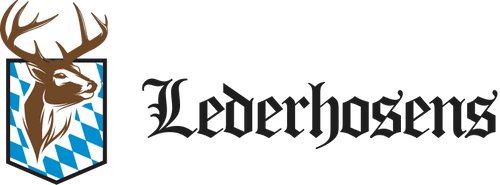Germany, what often comes to mind is delicious sausages and, of course, traditional German clothing.
These garments, known as Lederhosen and Dirndl, have a unique charm that transcends time and place. They are not pieces of fabric; they are living emblems of Germany's rich cultural heritage.
Lederhosen, those rugged yet elegant leather shorts, have graced the legs of Bavarian men for centuries.
They speak of Alpine adventures, hearty beer gardens, and the enduring spirit of the German people. So, Dirndl, the graceful dresses with their bows and frills, epitomize the essence of femininity and tradition in Germany.
But there's more to these outfits than meets the eye. Each stitch, each embroidery, and each accessory carries a piece of German history and culture.
In this blog post, we will embark on a journey through time and tradition, unraveling the stories behind Lederhosen and Dirndl.
Let's dive into the world of traditional German clothing, where elegance meets ruggedness and grace meets history.
Lederhosen: Rugged Elegance for the Modern Man
Imagine a piece of clothing that creates a look that is both timeless and versatile. That's what Lederhosen offers.
These leather shorts have been a staple in Bavarian fashion for centuries. When you think of Lederhosen, imagine yourself enjoying a hearty meal at a cozy beer garden.
The History of Men Lederhosen
Lederhosen, whose name translates to "leather breeches," has a rich history dating back to the 18th century.
Designed for the working class in the Alpine regions of Bavaria, these durable leather pants were perfect for the rigors of daily life.
Lederhosen evolved from practical workwear into a symbol of traditional Bavarian culture.
The Anatomy of Lederhosen
Lederhosen come in various styles, but they all share common elements. A typical pair includes leather shorts, suspenders, and often a matching checkered shirt.
The leather is usually soft and supple, allowing for comfort while maintaining durability.
Intricate embroidery along the front flap and suspenders adds an elegant touch.
|
Pro Tip: 1 To complete the look, consider adding a felt hat with a feather, known as a "Tirolerhut." This small detail can make a big difference in your traditional German outfit. |
Modern German Clothing: Lederhosen in Contemporary Fashion
While Lederhosen remains a symbol of German tradition, they have also found their place in modern fashion. Today, you can spot them not only at Oktoberfest but also in urban settings where they are paired with stylish accessories.
It's a testament to the timeless appeal of Lederhosen, which blends old-world charm with contemporary flair.
Dirndl: The Graceful Essence of Traditional Women Clothing
For women, the quintessential traditional German attire is the Dirndl. This charming dress embodies grace and elegance, making it a symbol of femininity and tradition.
Wearing a Dirndl is like stepping into a fairy tale, where every bow and frill tells a story of its own.
The Origin of Women Dirndl
The history of the Dirndl can be traced back to the rural regions of Austria and Bavaria in the 19th century.
Elements of a Dirndl
A Dirndl consists of a bodice, a blouse, a full skirt, an apron, and sometimes a decorative chain or brooch. The bodice is designed to stress the waist, while the blouse, often with puff sleeves, adds a touch of delicacy.
The skirt flows, and the apron's color and placement can convey a woman's marital status or personal style.
|
Pro Tip: 2 When tying the apron, if you tie it on the left side, it signifies that you're single and ready to mingle. Tying it on the right side suggests that you are married, and trying it in the middle can signal that you are undecided or in a complicated relationship. |
Dirndl in Contemporary Fashion
Lederhosen Dirndls have found their way into modern wardrobes. Fashion designers have reimagined the traditional Dirndl.
They create variations that cater to different tastes and occasions, whether you're attending a traditional Bavarian wedding or want to embrace your Dirndl.
Worn by servants, the Dirndl became popular among the upper class. Today, it is an integral part of Oktoberfest celebrations, as well as other traditional German festivals.
Traditional German Clothing
In the world of fashion, traditional German clothing stands out as a testament to heritage and history. Lederhosen and Dirndl have transcended their origins to become symbols of German culture and identity.
These garments for a special occasion are an embodiment of the vibrant and diverse tapestry that is in Germany.So, next time you find yourself in the mood for a taste of tradition, consider slipping into a pair of Lederhosen or a Dirndl.
Embrace the elegance and ruggedness, the grace and charm, and take a step into the enchanting world of traditional German clothing.
It's a journey that will not only enhance your wardrobe but also your connection to a culture steeped in history.
FAQs
Traditional German clothes are called "Lederhosen" for men and "Dirndl" for women.
If you don't have a Dirndl, you can wear traditional German attire like Lederhosen for men or opt for Bavarian-inspired clothing such as plaid shirts and lederhosen-style shorts for a festive Oktoberfest look.
German suspenders are called "Hosenträger.
The most popular clothing in Germany, like in many Western countries, includes modern casual wear such as jeans, t-shirts, and sneakers, suitable for daily life.

